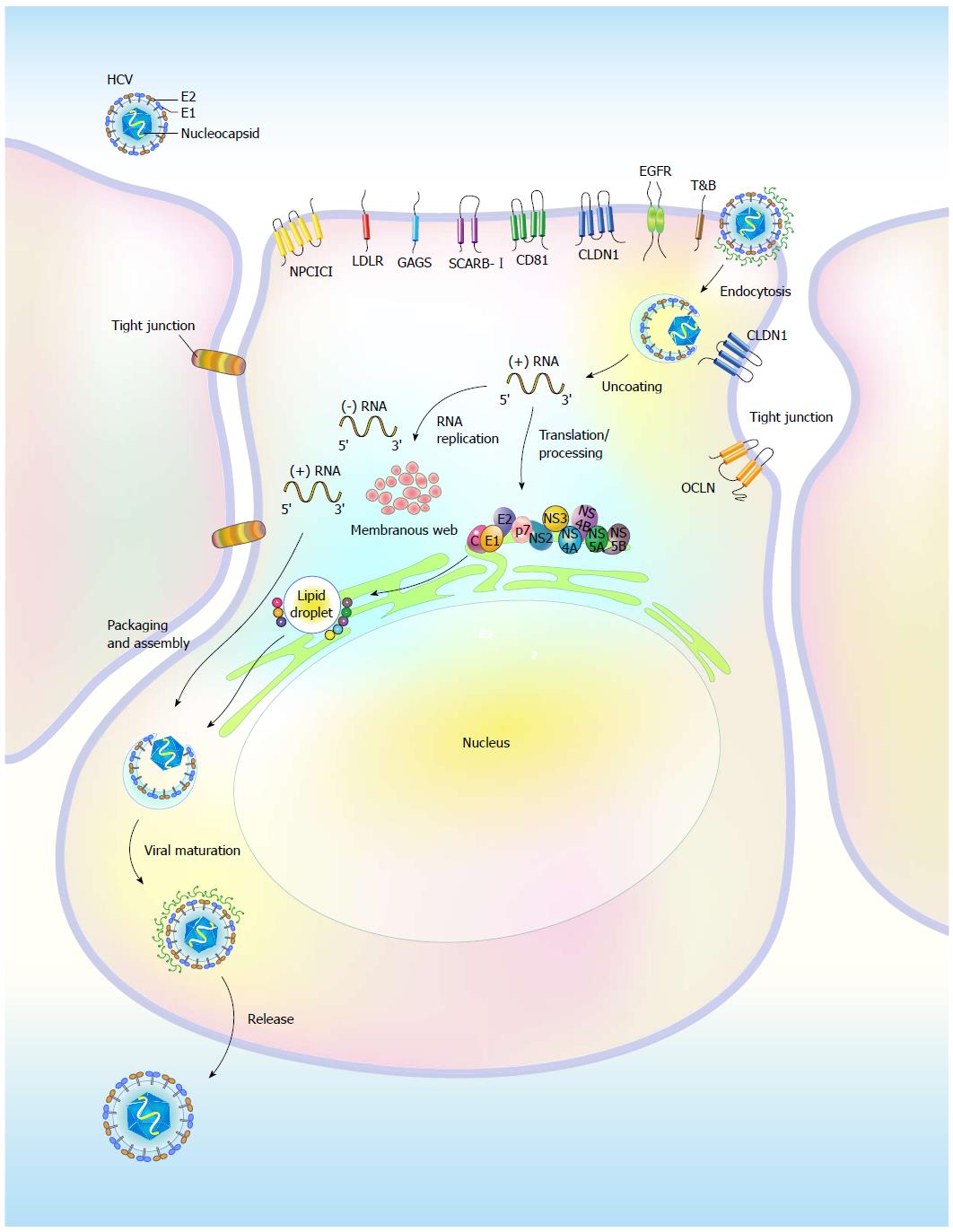Copyright
©2014 Baishideng Publishing Group Inc.
World J Gastroenterol. May 21, 2014; 20(19): 5773-5793
Published online May 21, 2014. doi: 10.3748/wjg.v20.i19.5773
Published online May 21, 2014. doi: 10.3748/wjg.v20.i19.5773
Figure 1 Life cycle of hepatitis C virus.
Hepatitis C virus (HCV) replication involves binding of the virion to the entry molecules on the cell surface of host hepatocytes; endocytosis; viral genome uncoating and translation; polyprotein processing; RNA replication on the ER-associated membrane structure, called the “membranous web”; and virion packaging, assembly, maturation, and release. Glycosaminoglycans (GAG), low-density lipoprotein receptor (LDLR), scavenger receptor class B member I (SCARB-I), two tight junction molecules Claudin 1 (CLDN1) and Occludin (OCLN), epidermal growth factor receptor (EGFR), ephrin receptor A2 (EphA2), Niemann-Pick C1-like L1 (NPC1L1), and transferrin receptor (TfR) constitute the entry receptors. In addition to participating in viral RNA replication, the NS proteins are recruited onto the surface of lipid droplets (LDs) to promote viral RNA replication and the assembly of infectious viral particles, which are composed of the core, E1, and E2 proteins.
- Citation: Ke PY, Chen SSL. Autophagy in hepatitis C virus-host interactions: Potential roles and therapeutic targets for liver-associated diseases. World J Gastroenterol 2014; 20(19): 5773-5793
- URL: https://www.wjgnet.com/1007-9327/full/v20/i19/5773.htm
- DOI: https://dx.doi.org/10.3748/wjg.v20.i19.5773









